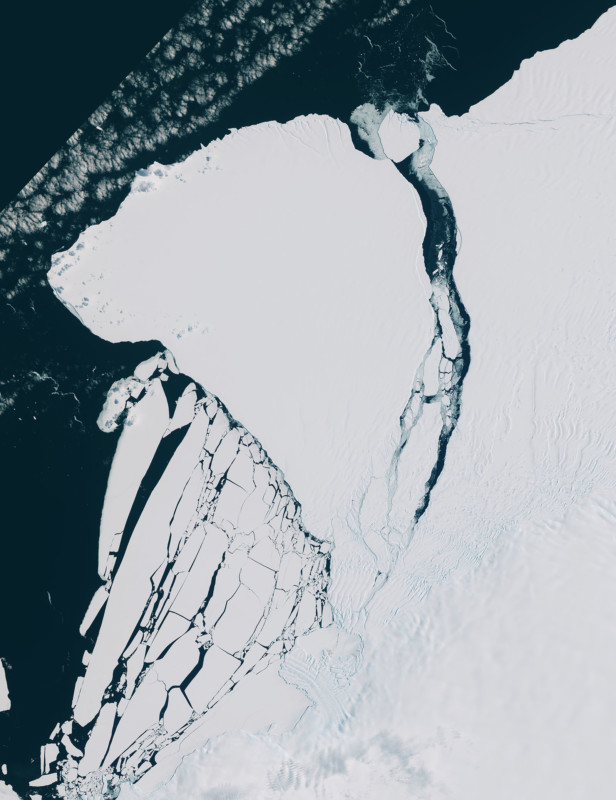Photos Show City-Sized Ice Chunk Breaking Away from Arctic Shelf
![]()
A giant iceberg five times the size of Malta has broken away from Antarctica’s Brunt Ice Shelf, satellite imagery shows.
The newly-freed iceberg is estimated to be about 598.5 square miles large (1,550 kilometers), which would make it just about equal to the size of Houston, Texas, the ninth-largest city in the United States. The 150-meter (about 492 feet) thick chunk of ice calved away from what is known as Chasm-1 and has been barely hanging on since 2012 when a crack was first observed.
The photos, taken from the Copernicus Sentinel-2 satellite, show what the region looked like before and after the separation.
The calving event was first reported by the British Antarctic Survey (BAS) as having occurred on January 22 during a spring tide, the ESA reports. While it was anticipated, Chasm-1 had been dormant for decades and this particular calving was therefore somewhat surprising.

“After several years of iceberg calving watch, the long-awaited separation of the Brunt iceberg A81 has finally taken place. The northward propagation of Chasm-1 and timely decision for BAS to move the Halley Base to safer ground have been accompanied by what has been perhaps the most detailed and longest duration scrutiny of events leading to natural calving from an Antarctic ice shelf,” the ESA’s Mark Drinkwater says.
Dominic Hodgson, a BAS glaciologist, says that this calving event has been anticipated for some time and is not linked to climate change.
“This calving event has been expected and is part of the natural behavior of the Brunt Ice Shelf. It is not linked to climate change,” he says. “Our science and operational teams continue to monitor the ice shelf in real-time to ensure it is safe, and to maintain the delivery of the science we undertake at Halley.”
The ESA says that the new separated iceberg will likely be named A-81, as they are traditionally identified by a capital letter indicating the Antarctic quadrant where it was originally seen followed by a sequential number. If it breaks into further smaller pieces, it gets a sequential letter suffix.
Scientists will now closely monitor the surrounding area as the separation of such a large amount of ice will have an affect in the flow of ice and other ice shelves around it.
Image credits: Modified Copernicus Sentinel data (2023), processed by ESA, CC BY-SA 3.0 IGO